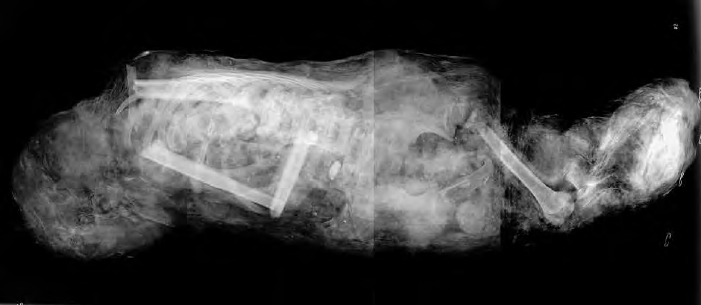Jackal God Animal Cults

The Egyptian jackal gods, for the most part, had their own temples and cults, with major centers for Anubis at el-Qeis (known in Greek as Kynopolis, “Dogtown”) and Wepwawet at Asyut (Greek Lykopolis, “Wolftown”). In addition, many animal cults connected to the jackal gods existed throughout Egypt. Keeping wild animals like jackals at cult centers was not practical, so these cults featured dogs, which could be mummified and left as votive offerings to the gods.
Thousands of dog mummies survive from these cults, with major deposits at Saqqara and Abydos. The mummies were sometimes decorated with details invoking the jackal gods, but more often they were left plain, simply shaped as dogs.
The Kelsey Museum has one example of a dog-shaped mummy from such a cult, but x-rays have revealed some surprises. The Kelsey mummy contains not a dog skeleton but a miscellaneous jumble of human child bones, possibly from more than one individual (thanks to the investigations of Kelsey Museum Research Scientist Richard Redding). This mummy is not a modern fake but is rather evidence of a common ancient fraud: priests of animal cults often used random bones (and even sticks) to create an “animal” mummy for unsuspecting worshippers.





